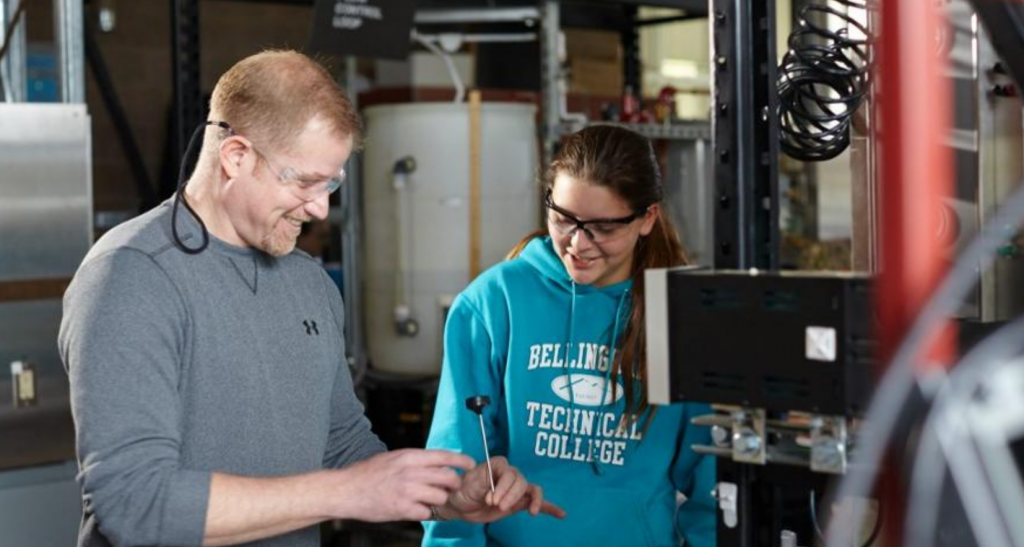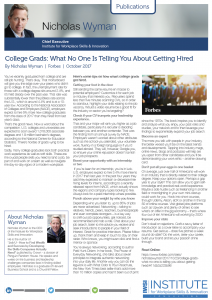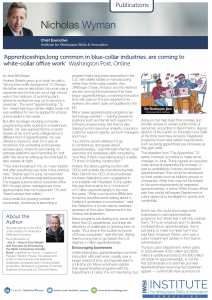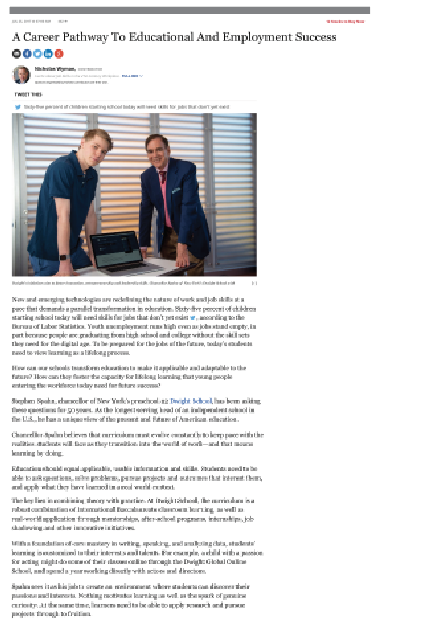In mid-March, during one of those CEO meetings that President Donald Trump used to hold before they were disbanded, Marc Benioff, the chief executive of Salesforce.com, was asked to make some brief remarks. One of Benioff’s passions is apprenticeships; he believes that if the US had an apprenticeship system like Germany or Australia, it could make a significant dent in the unemployment rate, especially among the millions of people who lack college degrees.
After quickly introducing himself, Benioff cut to the chase. “We’d love to encourage you to take a moonshot goal of creating 5 million apprenticeships in the next five years,” he told Trump.
“Let’s do that,” replied the president, breaking into a big smile. “Let’s go for that 5 million. Okay?”
Last week, in an announcement that was barely noticed, the Labor Department unveiled its Task Force on Apprenticeship Expansion. In addition to three cabinet secretaries—Betsy DeVos at Education, Wilbur Ross at Commerce and Alexander Acosta at Labor—the panel will include several chief executives of Fortune 500 companies, some union representatives and the heads of key lobbying groups like the National Association of Manufacturers. Plus John Ratzenberger, the actor who played Cliff Clavin, the postal carrier on “Cheers.” He’s an advocate for skills training.
This is hardly an encouraging first step. Government-appointed task forces rarely make the kinds of bold recommendations needed to jump-start a new idea. That will be especially true of this panel. There are too many interest groups with too many competing agendas to reach the necessary compromises, so the final report is likely to be mush. Like so much else with Trump, it’s hard to imagine this apprenticeship push amounting to anything.

Which is a real shame. According to the Department of Labor, there are 6.1 million jobs that employers can’t fill because they can’t find enough skilled workers. A study conducted this summer by the National Center for the Middle Market at Ohio State University found that 44 percent of mid-market companies 1 said they had difficulty recruiting people who had the skills they needed. Some 37 percent said their growth was constrained by a lack of talent. Small businesses, meanwhile, complain that there are “few or no qualified applications” to fill job openings.
At the same time, young people who didn’t attend college are having a hard time finding jobs that pay more than the minimum wage. According to the Bureau of Labor Statistics, there are 5.1 million Americans who want full-time work but can only find part-time jobs. The unemployment rate for high school graduates and college dropouts is close to 20 percent. Peter Boockvar, the chief market analyst for the economic advisory consulting firm the Lindsey Group, told the Washington Post recently that nearly one out of five Americans between the ages of 25 and 54 are out of work.
This mismatch has a name: the skills gap. The solution, obviously, is to get prospective workers the skills training they need. But this turns out to be something the U.S. is not very good at. Community colleges, which should be a big part of the answer, focus more on standard college material than on vocational training, and their dropout rate is appalling high.
Government retraining programs have had almost no impact. A large part of the reason, says Nicholas Wyman, an expert on job training and apprenticeships, is that “all the supposed training takes place in a classroom” rather than on a factory floor or in a company office.
As for apprenticeships, the only U.S. industry that relies on them is construction, and that is in part because unions use them to keep non-union labor away. (Five of the 23 members of the task force represent either construction unions or the construction industry.)
Yet if done right, apprenticeships could do a lot to close the skills gap. In a good apprenticeship program, unskilled workers would be guided by mentors, get on-the-job training and take narrowly tailored classes in community college.
For companies, apprenticeship programs would mean that instead of waiting fruitlessly for skilled workers to walk in the door, they could build the workforce they need. Government’s role would be to supply enough money to help subsidize the salaries of the apprentices, certify that the apprenticeships meet certain minimum standards, push community colleges to align themselves with an apprenticeship movement, and help create a culture where apprenticeships are seen as a head-held-high alternative to a college degree.
It doesn’t take a task force to figure that out. All it takes is a look across the ocean to see what other countries have done. Put aside Germany, which has had a culture of apprenticeship for hundreds of years. Take, instead, the U.K., which in the late 1990s not only had high unemployment but had the same kind of pessimism among the unemployed that the U.S. now faces. In a bid to spur the economy, the government of Tony Blair decided to revive the country’s apprenticeships, which had nearly died out.
Between 2003 and 2012, according to Thomas Bewick, who advised the Blair government, the number of apprentices grew from 75,000 to 800,000 a year. It’s now up to 1 million a year.
What’s required beyond some government money, Bewick told me, is to get business to buy in.
“In Australia,” said Wyman, who is Australian, “apprenticeships are employer-led, with government as a partner at the table.” Australia also uses nonprofits, called Group Training Organizations, which match apprentices with companies. These organizations pay the apprentices and handle everything from teaching workplace behavior to providing insurance to managing recruitment. Companies pay the apprentice’s wage and a small fee to the nonprofit. Organizing apprenticeships this way is attractive to small and medium-sized businesses for whom running their own programs would be intimidating.
What one hears these days is that big U.S. companies that would like to try to start employing apprentices have lost hope that the Trump administration will ever do anything serious to push the issue along.
What is needed is not a task force, but a person with a vision for how apprenticeships can finally be a tool to shrink the skills gap. A person who is respected in the business community, and can get it to rally around a plan.
Thus my advice to the Trump administration: Disband your task force and give the job to Marc Benioff. And then get out of the way.
View Online:
https://www.bloomberg.com/view/articles/2017-10-24/apprenticeships-could-narrow-the-u-s-skills-gap
 Boost your opportunity with an internship or two
Boost your opportunity with an internship or two




